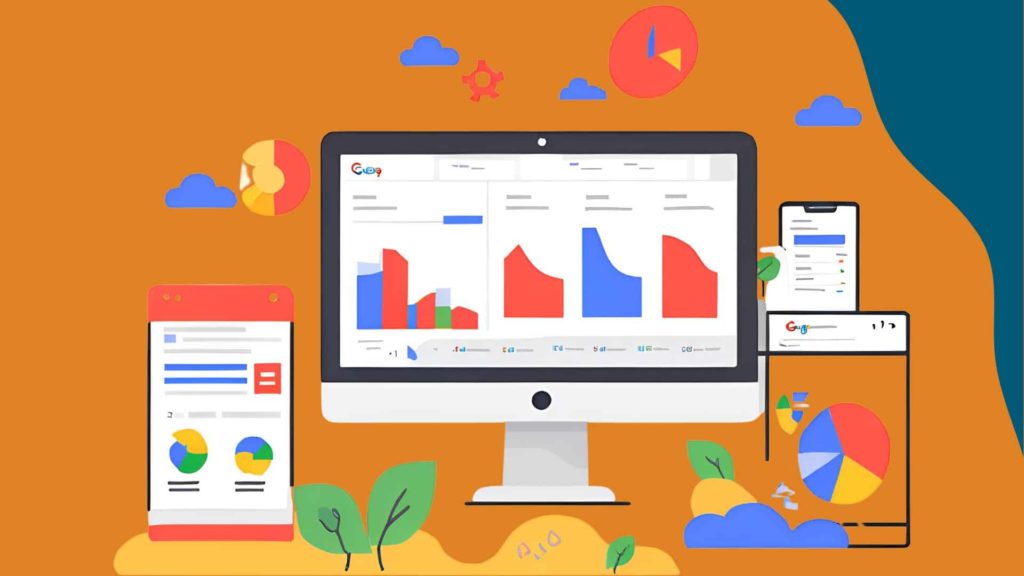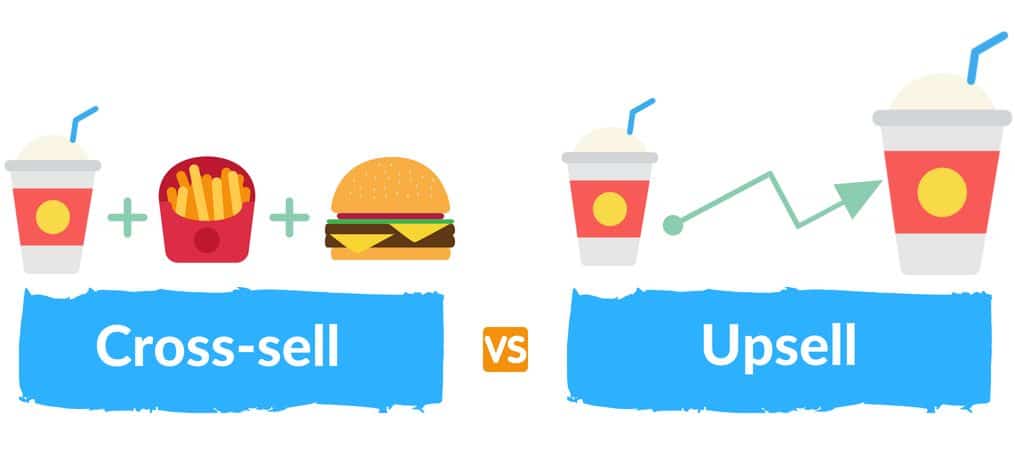Découvrez nos articles
Marketing & Vente B2B
Comment définir facilement son budget marketing ?
Comment définir facilement son budget marketing ?
Définir son budget marketing est un exercice souvent redouté, parfois bâclé, mais absolument stratégique. Trop d’entreprises investissent à l’aveugle, copient les pratiques de leurs concurrents ou réagissent à chaud sans…
15 novembre 2025
Lire la suite
Comment générer des leads sur LinkedIn ? | mise à jour 2025
Comment générer des leads sur LinkedIn ? | mise à jour 2025
Alors que les campagnes de cold emailing ne fonctionnent plus aussi bien qu’auparavant, approcher des prospects sur LinkedIn cartonne. En 2024, mettre en place une stratégie sur LinkedIn est clairement…
8 juin 2025
Lire la suiteTrouver des clients en BtoB : les meilleures stratégies de prospection en 2025
Trouver des clients en BtoB : les meilleures stratégies de prospection en 2025
La prospection commerciale en BtoB a radicalement évolué ces dernières années. Avec des acheteurs de plus en plus informés, un environnement économique tendu et des canaux saturés, vendre en 2025…
24 février 2025
Lire la suite
Quelles stratégies marketing 2025 pour vendre en B2B ?
Quelles stratégies marketing 2025 pour vendre en B2B ?
L’année 2025 appelle les entreprises à repenser leurs stratégies marketing face à un contexte économique et concurrentiel complexe. Pour continuer de se développer, les entreprises B2B doivent adopter des approches…
9 janvier 2025
Lire la suite
Revoir son offre et son positionnement pour générer des leads et de la croissance
Revoir son offre et son positionnement pour générer des leads et de la croissance
L'entreprise ADHOC Gestion est spécialisée dans l'externalisation de la gestion locative pour les professionnels de l'immobilier. Basée à Nantes et employant 15 personnes, elle propose ses services dans toute la…
29 novembre 2024
Lire la suite
Comment réussir vos campagnes Google Ads en 2025
Comment réussir vos campagnes Google Ads en 2025
La publicité en ligne continue d’évoluer à un rythme effréné. En 2025, Google Ads reste un levier essentiel pour attirer des clients, générer des leads et augmenter la visibilité de…
1 novembre 2024
Lire la suite
Pourquoi et comment utiliser les feedbacks client pour augmenter vos ventes ?
Pourquoi et comment utiliser les feedbacks client pour augmenter vos ventes ?
On ne le dira jamais assez, la confiance est le ciment de la vente. Témoignages, avis clients, recommandations, etc. tous les feedbacks de vos clients peuvent vous aider à générer…
9 octobre 2024
Lire la suite
Community-Led Growth : Utiliser les Communautés pour Stimuler la Croissance de Votre Entreprise
Community-Led Growth : Utiliser les Communautés pour Stimuler la Croissance de Votre Entreprise
Dans un climat d’incertitude et d’une relative méfiance à l’égard des marques, les communautés apportent la dimension humaine et le capital confiance nécessaires pour rassurer. Et vendre. L’utilisation des communautés en…
2 octobre 2024
Lire la suite
Argumentaire de vente : 6 questions infaillibles pour vendre mieux et plus vite
Argumentaire de vente : 6 questions infaillibles pour vendre mieux et plus vite
Les 6 questions incontournables pour un pitch de vente efficace Lorsqu'il s'agit de convaincre des prospects de choisir votre produit ou service, avoir un pitch de vente solide est essentiel.…
29 août 2024
Lire la suite
Prospection téléphonique : 3 étapes pour réussir vos appels à froid
Prospection téléphonique : 3 étapes pour réussir vos appels à froid
Il y a un exercice qui fait transpirer plus d'un dirigeant commercial et même plus d'un responsable commercial : la prospection par téléphone ! Quand on a lancé My Marketing…
24 août 2024
Lire la suite
Les 5 étapes pour une prospection BtoB efficace et sans douleur
Les 5 étapes pour une prospection BtoB efficace et sans douleur
La prospection est un élément essentiel de toute stratégie commerciale, mais elle est souvent mal comprise et mal exécutée. Beaucoup la voient comme une corvée, quelque chose à redouter. Pourtant,…
4 juillet 2024
Lire la suite
Les grandes tendances marketing de 2024
Les grandes tendances marketing de 2024
Et voilà, 2024 a pointé le bout de son nez ! C’est l’occasion de redéfinir ses objectifs marketing et surtout de planifier les actions de ces prochains mois en s’inspirant…
3 février 2024
Lire la suite
Le marketing de la rareté, un des secrets des marques et entreprises btob qui cartonnent
Le marketing de la rareté, un des secrets des marques et entreprises btob qui cartonnent
« Tout ce qui est rare est cher ! ». Ah, cette chère théorie de l’eau et du diamant… l’eau est vitale, mais peu chère, car disponible en grande quantité alors que le…
3 février 2024
Lire la suite
Top 13 des podcasts marketing pour entrepreneurs en 2024
Top 13 des podcasts marketing pour entrepreneurs en 2024
Véritables outils de veille professionnelle, les podcasts sont des formats d'information audio de plus en plus prisés. Ils constituent un atout qui permet à tout entrepreneur de se motiver, de…
11 janvier 2024
Lire la suite
Comment générer des leads sur LinkedIn en 2024 ?
Comment générer des leads sur LinkedIn en 2024 ?
Alors que les campagnes de cold emailing ne fonctionnent plus aussi bien qu’auparavant, approcher des prospects sur LinkedIn cartonne. En 2024, mettre en place une stratégie sur LinkedIn est clairement…
8 janvier 2024
Lire la suite
Comment augmenter la valeur perçue de son offre grâce au neuromarketing ?
Comment augmenter la valeur perçue de son offre grâce au neuromarketing ?
« Ça coûte trop cher », « je vais y réfléchir », « c’est possible de faire un geste commercial ? » … Si l’une de ces phrases a déjà été…
13 novembre 2023
Lire la suiteComment rédiger un cahier des charges web efficace pour son site internet ?
Comment rédiger un cahier des charges web efficace pour son site internet ?
Si vous avez déjà créé un site internet ou géré un projet de création ou de refonte de site internet, vous savez que c'est loin d'être un long fleuve tranquille. Pour…
25 octobre 2023
Lire la suite
30 actions marketing à tester pour générer des leads en BtoB
30 actions marketing à tester pour générer des leads en BtoB
Comment trouver des clients quand pour une activité business to business (BtoB) ? S’il y a bien une question qui trotte dans la tête de tous les entrepreneurs, c’est celle-ci. Alors,…
6 octobre 2023
Lire la suite
Levée de fonds et financement professionnel : optimisez vos chances de réussite grâce au storytelling financier
Levée de fonds et financement professionnel : optimisez vos chances de réussite grâce au storytelling financier
Vous êtes-vous déjà demandé pourquoi certains projets professionnels obtiennent facilement un financement tandis que d'autres, malgré leur potentiel, peinent à convaincre les banques ? Une partie de la réponse tient en…
14 septembre 2023
Lire la suite
Upselling et Cross-selling : augmenter vos ventes sans prospecter
Upselling et Cross-selling : augmenter vos ventes sans prospecter
Ca vous est déjà arrivé de commander un simple menu chez McDonald's et, hop, comme par magie, vous voilà avec une grande frite et un Sundae caramel en plus? Et…
29 juillet 2023
Lire la suite
Entreprises en B2B : quelles actions marketing mettre en place en été?
Entreprises en B2B : quelles actions marketing mettre en place en été?
Pour beaucoup d'entreprises B2B, l'été est synonyme de ralentissement du rythme. Moins d'appels entrants, moins d'emails, moins de ventes... vos clients et prospects semblent partis en vacances. Profitez! Ca…
29 juin 2023
Lire la suite
Stratégies de Positionnement Marketing : Comment se différencier en 5 Étapes
Stratégies de Positionnement Marketing : Comment se différencier en 5 Étapes
Si vous avez fait 2h de cours de marketing dans votre vie, vous avez forcément entendu du positionnement. Si vous êtes entrepreneur aussi. C'est un des concepts les plus important…
15 juin 2023
Lire la suite
Augmenter son Chiffre d’Affaires grâce à la Fidélisation : le Guide Complet
Augmenter son Chiffre d’Affaires grâce à la Fidélisation : le Guide Complet
Savez-vous que vous n'avez pas forcément besoin de conquérir de nouveaux clients pour augmenter votre chiffre d’affaires ? Non, vous n'avez pas mal lu. Vous êtes peut-être assis, en ce…
1 juin 2023
Lire la suite
Comment améliorer son personal branding ?
Comment améliorer son personal branding ?
Dans un monde où l'image de marque personnelle joue un rôle crucial, il est essentiel de comprendre comment vous pouvez vous démarquer et attirer l'attention des autres. Que vous soyez…
25 mai 2023
Lire la suite
Les questions secrètes pour optimiser son marketing et booster ses ventes
Les questions secrètes pour optimiser son marketing et booster ses ventes
Quand on vous parle de hacks marketing, vous pensez à des actions un peu techniques et complexes à mettre en place pour optimiser son marketing et ses ventes. Vous allez…
18 mai 2023
Lire la suite
Comment différencier une offre en BtoB ?
Comment différencier une offre en BtoB ?
Savoir différencier une offre sera le plus grand défi des entreprises BtoB. À moins que votre offre ne soit en complète rupture avec le marché, totalement innovante ou jamais vue,…
20 janvier 2023
Lire la suite
Tendances marketing BtoB 2023 : à quoi faut-il s’attendre ?
Tendances marketing BtoB 2023 : à quoi faut-il s’attendre ?
L'année 2023 approche à grands pas et, avec elle, de nouvelles tendances marketing BtoB à prendre en compte! Si certaines tendances sont déjà émergentes, d'autres sont encore en train de…
29 décembre 2022
Lire la suite
Comment créer une offre irrésistible en B2B ?
Comment créer une offre irrésistible en B2B ?
Les offres sont de très loin le levier marketing le plus sous-exploité en B2B. Ce n'est pas la partie "sexy" du marketing stratégique. En marketing B2B, c’est encore assez peu…
8 décembre 2022
Lire la suite
Check-list pour réussir votre Campagne Publicitaire LinkedIn
Check-list pour réussir votre Campagne Publicitaire LinkedIn
Avec près de 850.000 entreprises françaises inscrites, LinkedIn est le réseau social le plus utilisé par les décideurs en B2B et le plus incitatif à l’achat. Il devient alors de…
19 octobre 2022
Lire la suite
Améliorer le référencement d’une PME sur Internet
Améliorer le référencement d’une PME sur Internet
Face à la concurrence des grandes marques et aux exigences de Google, comment améliorer le référencement d’une PME sur Internet ? Équipe restreinte, budget au cordeau, manque de temps, d'expertise……
11 octobre 2022
Lire la suite
L’Employee Advocacy sur LinkedIn, qu’est-ce que c’est ?
L’Employee Advocacy sur LinkedIn, qu’est-ce que c’est ?
L’employee advocacy ou employé ambassadeur est un concept récent apparu avec l’émergence du de LinkedIn et du social selling. Il correspond au fait, pour une entreprise, de s’appuyer sur ses employés…
27 mai 2022
Lire la suite
Social selling sur LinkedIn, les clés pour attirer des clients
Social selling sur LinkedIn, les clés pour attirer des clients
Le social selling, ça vous parle ? La digitalisation de la société et l’utilisation croissante des réseaux sociaux ont complètement bouleversé les méthodes de ventes. Tandis que le phénomène connaissait déjà…
20 mai 2022
Lire la suite
Marketing RH et marque employeur : comment les utiliser dans votre entreprise ?
Marketing RH et marque employeur : comment les utiliser dans votre entreprise ?
Depuis quelques années, les attentes des collaborateurs en entreprise ont changé. Le phénomène s’est notamment accentué avec la pandémie et l’arrivée des nouvelles générations sur le marché du travail. Désormais,…
27 avril 2022
Lire la suite
Accueillir un alternant en marketing : les clés d’une collaboration réussie
Accueillir un alternant en marketing : les clés d’une collaboration réussie
L’alternance est de plus en plus utilisée en entreprise. C’est une solution qui séduit autant les entreprises que les étudiants. “En 2020, il y a eu 40% de plus de…
24 mars 2022
Lire la suite
Comment rédiger une proposition commerciale qui vend ?
Comment rédiger une proposition commerciale qui vend ?
L’étape de la proposition commerciale est souvent négligée en marketing et vente B2B. Et pourtant, c’est une arme de conversion massive. Une bonne proposition commerciale est un levier extrêmement puissant…
15 mars 2022
Lire la suite
Les étapes pour définir votre cible marketing
Les étapes pour définir votre cible marketing
Mis à jour le 11 mars 2022. “Mon produit s’adresse à tout le monde, n’importe qui peut en avoir besoin”. Une croyance que l’on croise encore régulièrement (et à…
11 mars 2022
Lire la suite
10 tendances marketing B2B incontournables en 2022
10 tendances marketing B2B incontournables en 2022
C'est de saison ! La fameuse question "quelles sont les tendances marketing B2B pour 2022 ?" Difficile de tout prévoir ou prédire alors on va tabler sur des tendances "fortement…
29 décembre 2021
Lire la suite
Comment construire un plan marketing en béton ?
Comment construire un plan marketing en béton ?
Vous êtes dirigeant.es, managers marketing et communication et vous avez la mission de construire votre plan marketing ? Si vous cherchez une méthode pour transformer cette apparente "contrainte" en…
2 décembre 2021
Lire la suite
Les techniques de conversation pour augmenter son taux de conversion
Les techniques de conversation pour augmenter son taux de conversion
L'acquisition, la génération de leads, ce sont les activités star du marketing. Et c'est hyper utile et important. Mais sans conversion, l'acquisition n'a que peu d'intérêt ! En effet,…
16 novembre 2021
Lire la suite
Comment se présenter sur Linkedin lorsqu’on a plusieurs activités ?
Comment se présenter sur Linkedin lorsqu’on a plusieurs activités ?
“J’ai plusieurs sociétés mais je n’en présente qu’une”. Et souvent, c’est aucune. Que ce soit par peur d’effrayer ou de ne pas savoir comment le faire, c'est une…
2 novembre 2021
Lire la suite
10 idées de contenus à utiliser sans hésitation en B2B
10 idées de contenus à utiliser sans hésitation en B2B
Le contenu fait partie intégrante de l’inbound marketing. Si cette stratégie marketing n’est pas nouvelle (on en parlait déjà ici), elle reste très pertinente en B2B. On vous arrête tout de…
28 octobre 2021
Lire la suite
Pourquoi et comment utiliser TikTok dans sa stratégie marketing B2B ?
Pourquoi et comment utiliser TikTok dans sa stratégie marketing B2B ?
La première chose à laquelle on pense sur TikTok c’est qu’il est utile que pour cibler et marketer les jeunes. Mais si 41 % des utilisateurs sont âgés de 16 à…
19 octobre 2021
Lire la suite
Publicité Facebook en B2B : comment les utiliser ?
Publicité Facebook en B2B : comment les utiliser ?
Facebook permet aux entreprises de créer des campagnes publicitaires réussies. Pour les entreprises s’adressant à d’autres entreprises, le choix d’utiliser les publicités Facebook en B2B est moins évident qu'en…
5 octobre 2021
Lire la suite
Booster sa croissance grâce au co-marketing
Booster sa croissance grâce au co-marketing
Comment développer rapidement son entreprise? Quelles actions mettre en place pour doper sa croissance? Bien qu’il n’existe pas de formule magique, la publicité, modèle qui a fait ses preuves,…
21 septembre 2021
Lire la suite
Marketing minimaliste : pourquoi et comment l’adopter dans son entreprise ?
Marketing minimaliste : pourquoi et comment l’adopter dans son entreprise ?
Marketing et minimalisme… Intuitivement, vous vous dites que ces deux mots ne vont pas bien ensemble. Un peu comme des antonymes. D’un côté le minimalisme. Rendu célèbre du grand…
6 septembre 2021
Lire la suite
Bilan mi-2021 : Les actions qui ont le mieux fonctionné
Bilan mi-2021 : Les actions qui ont le mieux fonctionné
Dans l’épisode 41 de My Marketing Podcast, nous avons partagé 7 tendances en marketing B2B pour 2021. Un semestre plus tard, nous allons parler de ce que nous avons mis…
24 juin 2021
Lire la suite
4 stratégies marketing pour augmenter le chiffre d’affaires de votre entreprise
4 stratégies marketing pour augmenter le chiffre d’affaires de votre entreprise
Demandez à un dirigeant quel est son objectif pour son entreprise : il y a une très forte probabilité pour qu’il ou elle vous réponde : augmenter son chiffre d’affaires. Eh…
4 juin 2021
Lire la suite
LinkedIn : les 5 formats de contenus à privilégier en 2021
LinkedIn : les 5 formats de contenus à privilégier en 2021
“Je ne sais pas quoi publier sur LinkedIn”. C’est une plainte que l’on entend très souvent, notamment durant nos accompagnements et nos formations. Ne pas savoir quoi publier est une…
28 mai 2021
Lire la suite
7 types de preuve sociale pour développer ses ventes en B2B
7 types de preuve sociale pour développer ses ventes en B2B
Episode 52 de My Marketing Podcast disponible à l'écoute en bas de cette page, sur iTunes, Google Podcast et Spotify. Lorsqu’un visiteur découvre votre entreprise pour la première fois,…
5 mai 2021
Lire la suite
Comment gagner en visibilité grâce au référencement éditorial ?
Comment gagner en visibilité grâce au référencement éditorial ?
La visibilité de son entreprise aujourd’hui, cela passe notamment par son site internet. Attirer des visiteurs, des visiteurs qualifiés bien entendu, est essentiel pour augmenter sa visibilité. Facile à dire…
28 avril 2021
Lire la suite
Qu’est-ce que le growth marketing et comment l’appliquer quand on est une PME ?
Qu’est-ce que le growth marketing et comment l’appliquer quand on est une PME ?
Le growth marketing, ou marketing de croissance en français est une technique qui s’appuie sur l’acquisition de clients pour développer son chiffre d’affaires. Largement utilisée du côté des startups…
22 avril 2021
Lire la suite
5 stratégies pour générer du trafic sans référencement naturel
5 stratégies pour générer du trafic sans référencement naturel
C’est une plainte que l’on entend très souvent : le site internet de mon entreprise génère peu de trafic. Et pas de leads. C’est une situation très frustrante quand on…
15 avril 2021
Lire la suite
Changement de nom et d’identité d’entreprise, le bilan un an après.
Changement de nom et d’identité d’entreprise, le bilan un an après.
Il y a un an, My Marketing Xperience a remplacé My Marketing Manager à l'occasion de notre 10ème anniversaire. Certainement une des étapes les plus importantes dans notre stratégie. Ni…
9 avril 2021
Lire la suite
Comment intégrer le podcast dans sa stratégie BtoB ?
Comment intégrer le podcast dans sa stratégie BtoB ?
Depuis 2019, My Marketing Xperience s’est lancé dans les podcasts. Cependant, nous sommes loin d’être des expertes dans ce domaine. C’est pour cela que nous avons invité une spécialiste des…
26 mars 2021
Lire la suite
Comment les biais cognitifs influencent l’expérience clients ?
Comment les biais cognitifs influencent l’expérience clients ?
Imaginez que vous alliez dans un très beau restaurant. Tout est parfait : la décoration, la compagnie, vous êtes avec des amis, une très bonne compagnie, on vous sert des…
18 mars 2021
Lire la suite
Comment optimiser la fidélisation client ?
Comment optimiser la fidélisation client ?
Et ne plus jamais laisser des clients satisfaits partir à la concurrence! Ca nous est tous arrivé. Ça a gâché notre journée. Ça nous a laissé un goût amer,…
15 mars 2021
Lire la suite
6 outils de productivité dont on ne peut pas se passer
6 outils de productivité dont on ne peut pas se passer
Une question qui nous revient très souvent est : quels sont les outils de productivité que vous utilisez ? De nos jours, nous sommes nombreux à chercher à gagner un maximum…
5 mars 2021
Lire la suite
Comment développer une marque au service de son entreprise en B2B ?
Comment développer une marque au service de son entreprise en B2B ?
En B2B, les stratégies marketing se focalisent traditionnellement sur le produit ou le service, l'offre et la relation client. Si tout cela est bien entendu essentielles, cela ne permet pas…
3 mars 2021
Lire la suite
Comment choisir sa cible clients en B2B ?
Comment choisir sa cible clients en B2B ?
Si vous êtes entrepreneur.e ou dirigeant.e, vous n’avez pas pu échapper à cette question. “Qui sont vos clients? À qui vous vous adressez?” Une question en apparence très…
18 février 2021
Lire la suite
2 powerful ways to generate more B2B leads
2 powerful ways to generate more B2B leads
We recently conducted a LinkedIn survey asking entrepreneurs and executives what their first goal is. Unsurprisingly, lead acquisition comes first. This is exactly the same result found in other surveys…
28 janvier 2021
Lire la suite
2 leviers puissants pour générer plus de leads en B2B
2 leviers puissants pour générer plus de leads en B2B
Nous avons fait récemment un sondage sur LinkedIn en demandant aux entrepreneurs et aux dirigeants quel était leur objectif n° 1. Sans grande surprise, c’est l’acquisition de leads qui arrive en…
28 janvier 2021
Lire la suite
B2B Marketing trends in 2021
B2B Marketing trends in 2021
What are the priority actions? As if the world was not changing fast enough, the Coronavirus crisis has given a boost to marketing practices in B2B. SMEs and VSEs,…
19 décembre 2020
Lire la suite
My Marketing Xperience, partenaire officiel du programme Extended Monaco pour l’Entreprise
My Marketing Xperience, partenaire officiel du programme Extended Monaco pour l’Entreprise
My Marketing Xperience est fière de faire partie des experts du numérique monégasques référencés pour accompagner les projets digitaux des entreprises dans le cadre du programme Extended Monaco pour l'Entreprise. …
11 décembre 2020
Lire la suite
Tendances marketing 2021 en BtoB
Tendances marketing 2021 en BtoB
Quelles sont les actions prioritaires ? Comme si le monde ne changeait pas assez vite, la crise du Covid19 est venue donner un coup d’accélérateur (option carambolage) dans…
7 décembre 2020
Lire la suite
5 tips for successful remote selling in BtoB
5 tips for successful remote selling in BtoB
For many salespeople used to face-to-face meetings, the last few months have been a real challenge with the obligation to work remotely. There have been countless conversations where managers have…
6 novembre 2020
Lire la suite
How to define your marketing target to find your customers and retain them: the ultimate guide.
How to define your marketing target to find your customers and retain them: the ultimate guide.
"My product is for everyone, anyone can need it". This is a belief that we still regularly come across. However, it is impossible to hold the attention of your visitors,…
6 novembre 2020
Lire la suite
5 questions pour simplifier votre marketing et vous aider à atteindre vos objectifs
5 questions pour simplifier votre marketing et vous aider à atteindre vos objectifs
Avouons-le : le marketing n’est pas toujours aussi simple que nous le souhaiterions. Même si vous connaissez les différents outils marketing, même si vous avez expérimenté différentes stratégies pour…
6 octobre 2020
Lire la suite
5 conseils pour bien vendre à distance en btob
5 conseils pour bien vendre à distance en btob
Pour de nombreux commerciaux habitués aux rencontres en face à face, les derniers mois ont été un vrai challenge avec l’obligation de travailler à distance. On ne compte plus les…
5 octobre 2020
Lire la suite
Génération de leads en BtoB : 3 ingrédients indispensables pour réussir
Génération de leads en BtoB : 3 ingrédients indispensables pour réussir
Nous évoquions le sujet début 2020. La génération de leads fait partie des objectifs prioritaires des entreprises en BtoB aujourd'hui. Le marketing digital a largement contribué à démocratiser ses techniques…
20 août 2020
Lire la suite
Marketing de crise : on fait quoi ?
Marketing de crise : on fait quoi ?
"Il faut rester positif!", "C'est le bon moment pour...", "Il y a des opportunités à saisir"! Face à la crise, les messages incitant les entrepreneurs et décideurs à aller de…
29 avril 2020
Lire la suite
My Marketing Manager fête ses 10 ans et devient My Marketing Xperience
My Marketing Manager fête ses 10 ans et devient My Marketing Xperience
Le 8 avril 2010 naissait My Marketing Manager. 10 ans, c’est un anniversaire important dans une vie, ça l’est aussi pour la vie d’une entreprise. Cet anniversaire marque une étape…
3 avril 2020
Lire la suite
Les 7 leviers à actionner en 2020 pour décupler le nombre de leads
Les 7 leviers à actionner en 2020 pour décupler le nombre de leads
2019 touche à sa fin et vous vous projetez déjà, ultra motivé.e (du moins, on vous le souhaite) en 2020 avec un objectif assez commun à tous les entrepreneurs :…
6 mars 2020
Lire la suite
My Marketing Manager était présente à Monaco Business 2019
My Marketing Manager était présente à Monaco Business 2019
Pour la deuxième année, l’équipe de My Marketing Manager a participé au salon Monaco Business qui s’est tenu le 3 octobre dernier à Monaco. Comme on ne change pas une…
8 octobre 2019
Lire la suite
My Marketing Xperience s’engage pour la transition énergétique
My Marketing Xperience s’engage pour la transition énergétique
Ceux qui nous connaissent personnellement le savent : la protection de l’environnement est une cause à laquelle nous sommes très sensibles chez My Marketing Xperience. Si nous avons depuis longtemps…
18 mars 2019
Lire la suite
Neuromarketing, un levier de croissance à explorer d’urgence
Neuromarketing, un levier de croissance à explorer d’urgence
Non. Le neuromarketing n’est pas réservé qu’aux marques bien établies qui disposent de budgets colossaux. Non, le neuromarketing n’est pas une manipulation issue de 1984 pour nous asservir. Le…
15 mars 2019
Lire la suite
Les 10 croyances qui pourrissent votre marketing
Les 10 croyances qui pourrissent votre marketing
“Le marketing, c’est pour les grosses entreprises”, “Mon marché, c’est tout le monde!”, “Facebook, ce n’est pas pour moi”. Nous rencontrons régulièrement des dirigeants d’entreprise avec des convictions très…
7 février 2019
Lire la suite
Social selling et prospection sur LinkedIn : pourquoi faut-il maîtriser l’art des réseaux sociaux en BtoB ?
Social selling et prospection sur LinkedIn : pourquoi faut-il maîtriser l’art des réseaux sociaux en BtoB ?
À l’occasion du salon Monaco Business, Sandie Giacobi est intervenue sur le digital et social selling en BtoB. Une conférence de 30 minutes qui a fait « lounge plein » et généré…
23 novembre 2018
Lire la suite
Ces raisons qui vous empêchent de bien vendre
Ces raisons qui vous empêchent de bien vendre
Imaginez un monde où tout le monde comprendrait presque instinctivement ce que fait votre entreprise, pourquoi vos produits ou vos services répondent aux problèmes de vos prospects… Quel gain de…
18 juillet 2018
Lire la suite
7 leçons tirées de The Voice à intégrer dans votre stratégie marketing
7 leçons tirées de The Voice à intégrer dans votre stratégie marketing
Si vous comprenez et intégrez les ingrédients du succès des vainqueurs de ce télé-crochet qui cartonne partout dans le monde, vous aurez déjà compris ce qui échappe et fait défaut…
10 mai 2018
Lire la suite
Prise de décision : parlez au ventre de vos clients, pas à leur tête !
Prise de décision : parlez au ventre de vos clients, pas à leur tête !
Que cela nous plaise ou non, les émotions influencent directement notre prise de décision. Le ventre serait le siège des émotions, nos décisions seraient donc prises avec nos “tripes” (gut comme…
19 mars 2018
Lire la suite
30 choses que vos clients n’osent pas vous dire
30 choses que vos clients n’osent pas vous dire
Vous faites votre maximum pour être à l’écoute de vos clients et pour qu’ils puissent toujours s’exprimer facilement. Sauf qu’il y a des choses qui ne se disent pas. Par…
5 mars 2018
Lire la suite
Entrepreneurs : parlez de votre idée, personne ne la volera !
Entrepreneurs : parlez de votre idée, personne ne la volera !
A l’occasion de notre récent atelier, nous avons largement couvert les techniques et les attitudes qui permettent d’aller plus vite : de trouver plus vite une idée, de créer…
18 février 2018
Lire la suite
[Intervention] Démarrer en mode start-up : les secrets pour grandir vite!
[Intervention] Démarrer en mode start-up : les secrets pour grandir vite!
Sandie Giacobi, co-fondatrice de My Marketing Manager, interviendra à l’occasion de l’événement “En Voiture Simone”, dédié à l’entrepreneuriat au féminin. Organisée dans le cadre de la Semaine de Sensibilisation de l’Entrepreneuriat…
15 février 2018
Lire la suite
L’intuition, l’arme secrète des entrepreneurs innovants?
L’intuition, l’arme secrète des entrepreneurs innovants?
Lancer une innovation, évaluer une opportunité d’affaires, s’implanter sur un nouveau marché… Tout entrepreneur est régulièrement amené à prendre des décisions stratégiques. Nous faisons ces choix avec notre cœur,…
10 novembre 2017
Lire la suite
Créer un espace concurrentiel sans concurrent avec la Stratégie Océan Bleu
Créer un espace concurrentiel sans concurrent avec la Stratégie Océan Bleu
Concurrence accrue, marchés saturés et convergence des marchés, volatilité des consommateurs… les entreprises évoluent dans un véritable “océan rouge”, le rouge symbolisant la lutte sanglante que se livrent les…
5 septembre 2017
Lire la suite
Site web : les erreurs à éviter
Site web : les erreurs à éviter
Nous sommes souvent contactées par des personnes qui ont déjà un site internet qui ne répond pas à leurs attentes. Les principaux reproches sont : Aucune visibilité Il fonctionne…
27 juin 2017
Lire la suite
Réussir sa levée de fonds : 7 conseils marketing à retenir
Réussir sa levée de fonds : 7 conseils marketing à retenir
Que l’on soit une start up ou une entreprise en développement, le financement de la croissance passe régulièrement par la recherche d’investisseurs. Que l’on s’adresse à des banquiers, des business angels…
18 avril 2017
Lire la suite
Fixer ses prix : Le Guide Pratique
Fixer ses prix : Le Guide Pratique
La question du prix et de la définition des tarifs pose régulièrement problème à un grand nombre de créateurs d’entreprise et de dirigeants. C’est une très variable fondamentale d’une stratégie…
23 mars 2017
Lire la suite
Qu’est-ce que le marketing automation et comment le mettre en place pour son entreprise?
Qu’est-ce que le marketing automation et comment le mettre en place pour son entreprise?
Dans notre précédent article sur la transformation digitale du marketing, nous évoquions la relation encore quelque peu “fraîche” entre les PME et les petites entreprises et le marketing digital. Non, ce…
2 janvier 2017
Lire la suite
Pourquoi votre stratégie marketing digital est un échec ?
Pourquoi votre stratégie marketing digital est un échec ?
Chez My Marketing Xperiece, la grande majorité de nos clients sont des entrepreneurs, des dirigeants de TPE et de PME – comme plus de 90% des entreprises en France.…
9 décembre 2016
Lire la suite
Monaco Business : Intervention de Sandie Giacobi de My Marketing Manager
Monaco Business : Intervention de Sandie Giacobi de My Marketing Manager
Monaco Business, le salon dédié aux entrepreneurs, aura lieu le 15 novembre 2016 à l’auditorium Rainier III à Monaco. Sandie Giacobi, co-fondatrice de My Marketing Manager, interviendra lors de la table…
26 octobre 2016
Lire la suite
Pourquoi le marketing de contenu est essentiel pour votre activité?
Pourquoi le marketing de contenu est essentiel pour votre activité?
Pourquoi le marketing de contenu est essentiel pour votre activité ? Au cours de ces dernières années, le marketing de contenu est devenu synonyme de réussite des entreprises. Cependant, il…
19 septembre 2016
Lire la suite
Comment créer une proposition de valeur gagnante ?
Comment créer une proposition de valeur gagnante ?
Tout le monde en conviendra : avant de vendre, il faut attirer l’attention. Lors de sa première visite sur un site internet, un visiteur passe en moyenne 8 secondes sur la…
9 mai 2016
Lire la suite
Votre stratégie marketing est-elle “future-proof”?
Votre stratégie marketing est-elle “future-proof”?
Tout va vite. L’évolution de la technologie, la production exponentielle de données, la diffusion de l’information, la distribution des produits et services, l’évolution des goûts, la multiplication des canaux de…
15 avril 2016
Lire la suite
Faire un plan de communication [étape 3] – les supports hors media
Faire un plan de communication [étape 3] – les supports hors media
Les supports hors media au service de votre plan de communication Instinctivement, lorsque l’on parle de communication, le premier réflexe est de penser à la publicité, à la presse,…
16 mars 2016
Lire la suite
Faire un plan de communication [étape 2] – les médias traditionnels
Faire un plan de communication [étape 2] – les médias traditionnels
Etape 2 : Médias traditionnels et plan de communication Dans la vidéo précédente nous avons vu quelles questions nécessaires se poser avant d’entamer le plan de communication. Voyons maintenant le vif…
19 janvier 2016
Lire la suite
Faire un plan de communication [étape 1]
Faire un plan de communication [étape 1]
Etape 1 : Réflexions préalables Que cela soit de la part d’entrepreneurs en création d’entreprise ou déjà lancés, d’indépendants, de TPE ou dePME, la question “comment faire un plan de communication” nous…
6 janvier 2016
Lire la suite
Positionnement marketing : 15 conseils pour bien raconter l’histoire de votre marque
Positionnement marketing : 15 conseils pour bien raconter l’histoire de votre marque
Comment bien positionner ma marque pour réussir ? Quelle histoire convaincante puis-je raconter au sujet de mon entreprise ? Voici les 2 questions auxquelles les entrepreneurs et responsables marketing doivent répondre…
19 novembre 2015
Lire la suite
Tout ce qu’il faut savoir sur le marketing automation !
Tout ce qu’il faut savoir sur le marketing automation !
A l’heure où la transformation digitale mène sa révolution dans les PME et TPE, dans un monde où l’entreprise veut être au plus proche de ses clients, le marketing…
16 juin 2015
Lire la suite12 commandements pour réussir sa campagne emailing de reconquête
12 commandements pour réussir sa campagne emailing de reconquête
Rien de plus exaspérant que d’envoyer des emails et rédiger des newsletters qui ne servent à rien. Mais pour s’en rendre compte il faut déjà suivre l’activité et les statistiques…
2 juin 2015
Lire la suite
5 tactiques de Growth Hacking à connaître d’urgence
5 tactiques de Growth Hacking à connaître d’urgence
Growth hacking : le nouveau buzz word de 2015 ? C’est avant tout une vision du marketing, un état d’esprit des petites entreprises et startups qui veulent une croissance rapide. C’est quoi…
22 mai 2015
Lire la suite
7 conseils SEO pour débutant
7 conseils SEO pour débutant
Le SEO, vous en avez entendu parler mais c’est encore un peu du chinois pour vous ? Pour faire simple, le SEO ou Search Engine Optimization est un ensemble de techniques visant…
5 mai 2015
Lire la suite
5 façons d’ajouter de la valeur à vos messages marketing
5 façons d’ajouter de la valeur à vos messages marketing
L’autre jour, j’ai reçu dans ma boîte email des bons de réduction pour des soins dans des instituts de beauté. Le message était bien conçu, les visuels vraiment attractifs……
8 avril 2015
Lire la suite
8 conseils pour augmenter le trafic vers votre site web !
8 conseils pour augmenter le trafic vers votre site web !
« Mon site web ne me rapporte pas les résultats espérés. » C’est un constat récurrent qui revient fréquemment dans la bouche de nombreux entrepreneurs et dirigeants que nous…
24 mars 2015
Lire la suite
Automatisez votre marketing et laissez-le travailler à votre place !
Automatisez votre marketing et laissez-le travailler à votre place !
Noël approche à pas de géants et les premiers d’entre nous seront bientôt en vacances pour quelques jours, voire quelques semaines pour les plus chanceux. Avant de partir vous…
9 décembre 2014
Lire la suite
5 facteurs clés de succès pour votre business plan
5 facteurs clés de succès pour votre business plan
Vous avez une idée, vous êtes prêt à passer au stade suivant ? Concrétiser ce projet. Bien souvent, il est nécessaire pour cela d’obtenir un financement. Petit ou grand,…
30 septembre 2014
Lire la suite
Séduire et fidéliser: comment réussir vos rendez-vous commerciaux avec vos clients ?
Séduire et fidéliser: comment réussir vos rendez-vous commerciaux avec vos clients ?
Qui n’a jamais stressé avant de se rendre à un rendez-vous chez un prospect? Chez un client? Avec son banquier? Ou même à un entretien d’embauche? On est…
9 septembre 2014
Lire la suite
6 considérations marketing à intégrer dès le départ pour réussir
6 considérations marketing à intégrer dès le départ pour réussir
Le marketing a tendance à être le parent pauvre de la création d’entreprise. Très souvent, l’énergie créatrice est absorbée par le plan financier, la recherche de partenaires, le développement…
30 avril 2014
Lire la suite
L’inbound marketing, meilleure pratique marketing ?
L’inbound marketing, meilleure pratique marketing ?
Aujourd’hui c’est un rendez-vous spécial web marketeurs que nous vous proposons. Tea time avec Stéphane Bureau, l’auteur du blog Mercatik spécialisé en Inbound Marketing. Inb..quoi ? Mais quel est…
10 décembre 2013
Lire la suite
10 questions à se poser avant de (re)faire son site internet
10 questions à se poser avant de (re)faire son site internet
Alors comme ça, vous faire ou refaire votre site internet? Vous y pensez depuis un moment et vous souhaitez optimiser votre stratégie marketing sur internet. Néanmoins, comme une grande…
3 juillet 2012
Lire la suite
Conseils pratiques pour votre marketing de produits innovants (partie 1/2)
Conseils pratiques pour votre marketing de produits innovants (partie 1/2)
Chez My Marketing Xperience, nous rencontrons et travaillons régulièrement avec des entreprises innovantes. Vendre une technologie – surtout lorsque l’entrepreneur est lui-même à la source de l’innovation – peut…
2 mars 2012
Lire la suite
Conseils pratiques pour votre marketing de produits innovants (partie 2/2)
Conseils pratiques pour votre marketing de produits innovants (partie 2/2)
Loin d’être un article théorique, nous avons souhaité partager avec vous notre expérience de responsables marketing pour des sociétés innovantes et identifié les problématiques fréquentes ainsi que les solutions…
2 mars 2012
Lire la suite